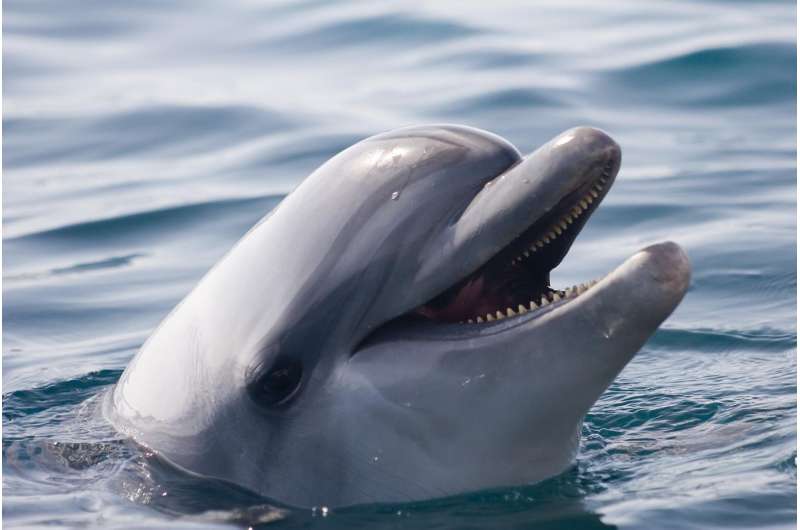Stranded dolphins have amyloid plaques in their brains

Dolphins stranded on the beaches of Florida and Massachusetts show in their brains amyloid plaques, a hallmark in human beings of Alzheimer's disease, together with an environmental toxin produced by cyanobacterial blooms.
An international team of scientists led by neuropathologist Dr. David Davis at the University of Miami Neurology Department discovered that stranded dolphins have both β-amyloid plaques and the environmental toxin BMAA in their brains.
"We found β-amyloid plaques and damaged neurons in brain tissues from dolphins that had died on the beaches of Florida and Massachusetts," Dr. Davis said.
"Dolphins are an excellent sentinel species for toxic exposures in the marine environment," co-author Dr. Deborah Mash explained. "With increasing frequency and duration of cyanobacterial blooms in coastal waters, dolphins might provide early warning of toxic exposures that could impact human health."
Scientists have previously found that chronic dietary exposure to the cyanobacterial toxin BMAA triggers β-amyloid plaques and neurofibrillary tangles, both hallmarks of Alzheimer's disease, in laboratory animals.
Neuropathological analysis was completed at the University of Miami, while chemical analysis of the toxins was conducted by Dr. Susan Murch at the University of British Columbia.
"We cannot say for sure that chronic exposure to cyanobacterial blooms can trigger Alzheimer's in humans but it is a risk that I personally am unwilling to take," oceanographer Larry Brand at Rosenstiel School of Marine Atmospheric Science cautions.
Ethnobotanist Paul Alan Cox at the Brain Chemistry Labs in Jackson Hole reports that the neuropathology and brain toxins in the dolphins are similar to those found in the brains of Chamorro villagers in Guam who suffered from an Alzheimer's-like disease.
"The $64,000 question is whether these marine mammals experienced cognitive deficits and disorientation that led to their beaching," Cox said. "Until further research clarifies this question, people should take simple steps to avoid cyanobacterial exposure."
The research report was published in PLOS ONE.
More information: David A. Davis et al, Cyanobacterial neurotoxin BMAA and brain pathology in stranded dolphins, PLOS ONE (2019). DOI: 10.1371/journal.pone.0213346
Journal information: PLoS ONE
Provided by University of Miami





















